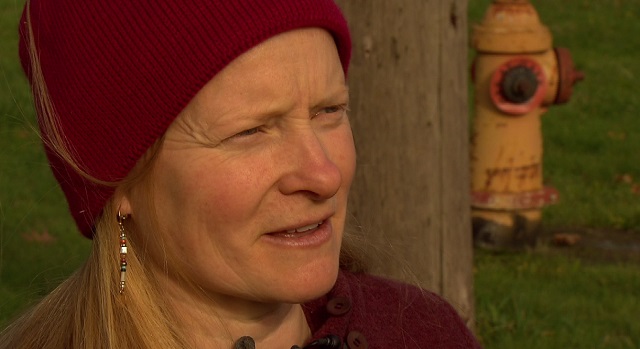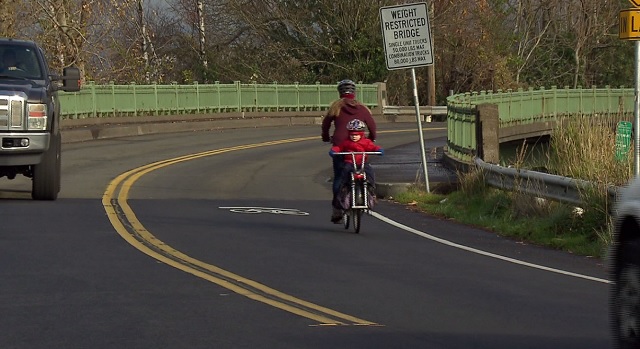PORTLAND, Ore. (KOIN) — Noelle Studer-Spevak and her son Siddon love spending time at Whitaker Ponds Nature Park. The trouble is getting there involves a risky bike ride over the 42nd Avenue Bridge.

“We have to take the middle lane. You don’t want to be on the side,” she told KOIN 6 News. “You have to definitely be a defensive cyclist when you’re heading toward the park.”
As bridges go, it’s more than just unfriendly for 2-wheel traffic. Trucks, other heavy freight and equipment are limited by weight restrictions in an area where manufacturing and industry dominate the landscape.
The 42nd Avenue Bridge itself is a time-worn, rusty and crusty relic. Now 80 years old, it’s the only way to cross Lombard Street between 33rd Avenue to the west and 82nd Avenue to the east.

“It’s inadequate,” said Dylan Rivera with the Portland Bureau of Transportation. “It really is inadequate.”
Rivera pointed out how, on Lombard, bike lanes disappear because of the bridge’s design.
“Below the bridge there are problems with the clearance, so a significant percentage of oversize loads have to divert around Lombard,” he said.
At a Portland City Council meeting November 8, city Budget Director Andrew Scott said the 42nd Avenue Bridge is “in very poor condition, actually failing condition, and poses some significant risk. So I think (the $4.9 million from the excess balance in the general fund approved to move a new bridge forward) is a good investment.”

It’s too early for specific design work, but a drawing shows how the city envisions a raised, widened and enhanced bridge, seismically retrofitted and no longer weight-restricted, with a bike land to cycle track and sidewalks leading up to either side.
“This would be a really big deal for our neighborhood because it’s so unsafe now,” Noelle Studer-Spevak told KOIN 6 News.
But she and others in the Cully neighborhood will have to wait a bit longer, though.
“We have a lot of needs for bridge maintenance and seismic upgrades,” Rivera said.
It’ll be 3 to 4 years before work begins because PBOT still needs to find additional funding and begin the design work, he said.
When that happens, it won’t be too soon for Noelle and her neighbors.
“It’ll be a big win for our community, particularly the underserved populations, people that don’t have cars, that don’t have any other way to access nature.”